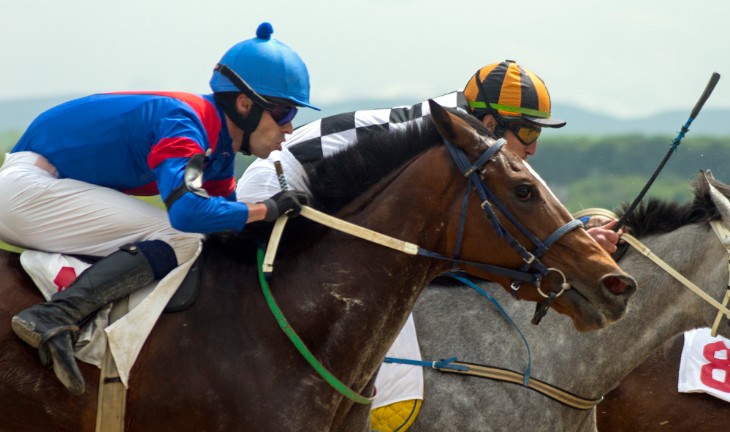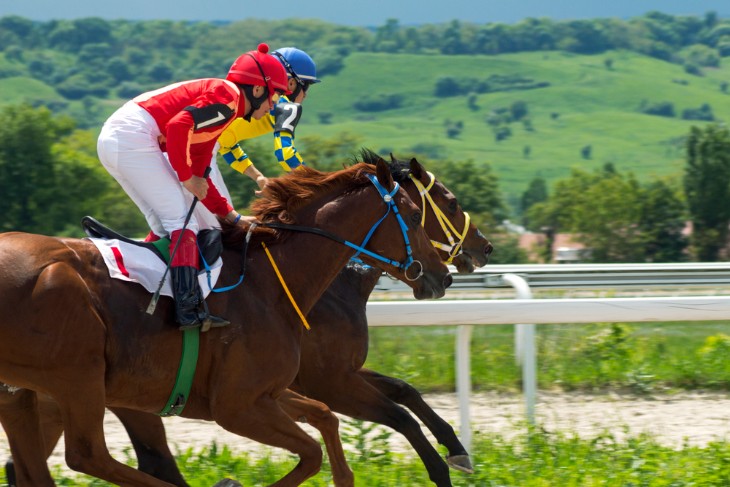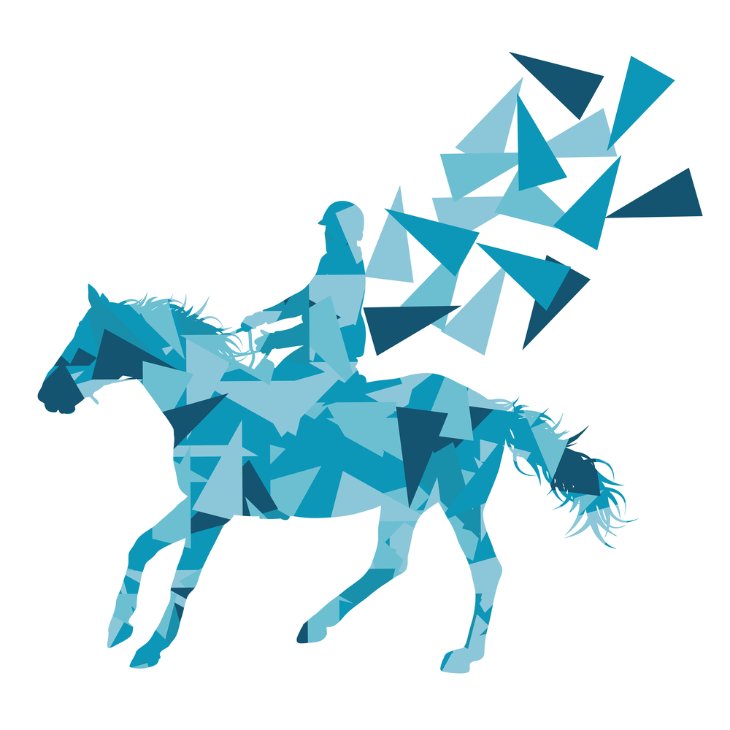Among the various equestrian pursuits, training racehorses stands out as a true art form that demands skill, patience, and a deep understanding of equine behavior. In this article, we delve into the intricacies of horse training with a special focus on methods applied to racehorses, and how they can significantly impact the horse's performance on the racetrack.
Understanding the Equine Athlete - The Racehorse
At the heart of every successful racehorse training program lies a comprehensive understanding of the equine athlete. Racehorses are a unique breed, bred specifically for speed, endurance, and competitive spirit. Their natural instincts make them formidable athletes, but it is the role of the trainer to refine and harness these innate abilities to produce a champion.
From the moment a young foal takes its first steps, trainers begin to observe their potential. The conformation, movement, and temperament of a horse are key indicators of its racing prowess. Selecting promising individuals with the right combination of physical attributes is the starting point of any successful racehorse training venture.
As a trainer, it is crucial to recognize that each racehorse is an individual with its personality and learning style. While some horses respond well to a gentle approach, others may require a firmer hand. Building a trusting and respectful relationship between trainer and horse forms the foundation of effective training.
Understanding equine psychology is equally vital. Horses are incredibly perceptive animals that thrive on consistency and clear communication. As trainers, we must be mindful of our body language and energy, as these elements greatly influence the horse's response and performance.
The Fundamentals of Horse Training
Before diving into specific methods, mastering the fundamentals of horse training is paramount. Patience, empathy, and a willingness to learn from the horse are qualities that every trainer must possess. Training a racehorse is a journey, not a destination, and each step along the way contributes to the ultimate success on the racetrack.
One of the core principles of horse training is the establishment of boundaries and trust. Horses are social animals with well-defined hierarchies, and a clear leader instills confidence and security in the herd. A skilled trainer assumes the role of a confident leader, guiding the horse through various training exercises with a sense of purpose and direction.
Building a strong foundation in basic handling and ground manners sets the stage for more advanced training. Teaching a horse to lead, stand, and respond to basic commands is not only essential for day-to-day management but also fosters a sense of respect and discipline in the horse.
Furthermore, positive reinforcement plays a crucial role in encouraging desired behaviors. Rewarding a horse for correct responses reinforces those actions, making it more likely for the horse to repeat them in the future. A well-timed treat or a gentle pat on the neck can go a long way in shaping a horse's behavior.

Traditional Training Techniques - Time-Honored Approaches
Throughout the history of horse training, certain traditional techniques have stood the test of time, forming the backbone of many successful racehorse training programs. These methods have been passed down through generations of horsemen and have played a significant role in shaping the champions of the past.
One such technique is longeing, where the horse is worked on a large circle at the end of a long rope, known as a longe line. This exercise allows the trainer to observe the horse's movement, balance, and responsiveness while encouraging the development of musculature and coordination. Longeing also aids in familiarizing the horse with voice commands and helps establish boundaries within a controlled environment.
Another key aspect of traditional training is the use of a training saddle or surcingle, which allows the trainer to introduce tack to the horse gradually. This familiarizes the horse with the feeling of weight on its back and prepares it for the next stage of training - being ridden.
The breaking process, also known as backing, is a pivotal moment in a racehorse's training journey. During this phase, the horse is introduced to the rider's weight and learns to respond to leg aids and rein cues. A skilled rider takes the time to build trust with the horse, ensuring a positive and confident experience that sets the stage for more advanced work.
You can read more about "Horse Training Techniques" here.
Modern Training Methods - Innovations in Horse Training
As times change, so do training methods, and the world of racehorse training has seen its share of innovations. Modern training techniques blend traditional wisdom with contemporary understanding of equine behavior and sports science, leading to more refined and efficient approaches.
One such innovation is clicker training, a method that employs positive reinforcement using a clicker as a marker for desired behaviors. By associating the sound of the clicker with a reward, the horse learns to recognize and repeat the behaviors that earn them a treat. Clicker training has proven successful in teaching complex movements and fostering a strong partnership between horse and trainer.
Equine sports therapy has also become an integral part of modern racehorse training. From massages and chiropractic treatments to hydrotherapy and laser therapy, these treatments help keep the equine athlete in peak physical condition. Regular sports therapy sessions aid in preventing injuries and promoting faster recovery, ensuring that the horse is ready to perform at its best on race day.
Technology has made its mark on the training world as well. Heart rate monitors, GPS tracking systems, and video analysis tools provide trainers with valuable data to monitor the horse's fitness level and performance. This data-driven approach allows for more precise training plans tailored to the individual needs of each horse.
Positive Reinforcement - Encouraging Desired Behaviors
Positive reinforcement is a powerful tool that taps into the horse's natural inclination to seek rewards. This technique involves rewarding the horse when it exhibits a desired behavior, making it more likely to repeat that behavior in the future. Treats, scratches, or verbal praise are commonly used as rewards, reinforcing the horse's understanding of what pleases its trainer.
Training with positive reinforcement cultivates a positive association with learning, making the process enjoyable and stress-free for the horse. It fosters a trusting and willing attitude, as the horse learns that its efforts are met with appreciation and gratification.
When implementing positive reinforcement, timing is crucial. The reward must be delivered promptly, immediately following the desired behavior. This reinforces the connection between the action and the reward, helping the horse understand precisely what it is being praised for.
Positive reinforcement is especially useful for teaching intricate movements and refining performance. By breaking down complex tasks into smaller steps, the trainer can reward incremental progress, leading to steady improvement. This method proves particularly effective in training racehorses for precision and agility on the racetrack.
Negative Reinforcement - Utilizing Pressure and Release
While positive reinforcement focuses on rewarding desired behaviors, negative reinforcement revolves around the release of pressure as a reward. The trainer applies pressure, typically through cues or aids, to prompt a specific response from the horse. When the horse responds correctly, the pressure is released, providing relief and acting as a reward.
It is essential to understand that negative reinforcement does not imply harsh or forceful techniques. The goal is to create a clear and consistent language between horse and rider, where subtle cues can communicate complex instructions. For example, when a rider applies leg pressure to ask the horse to move forward, the release of pressure occurs when the horse begins to walk or trot.
Like positive reinforcement, the timing of the release is crucial. Instantly releasing the pressure when the horse responds correctly helps the horse associate the action with the release, reinforcing the desired behavior.
Negative reinforcement can be valuable in refining communication and refining responses for advanced training maneuvers. When used correctly, it can create a confident and responsive equine athlete that is both willing and attentive to its rider's cues.
Balancing positive and negative reinforcement techniques allows for a well-rounded and versatile training approach. Every horse is unique, and understanding which combination of methods works best for each individual is key to unlocking their full potential.
Progressive Training - Building on Successive Achievements
Progressive training is a fundamental aspect of shaping a racehorse into a formidable competitor. This method involves breaking down complex tasks into manageable steps, allowing the horse to build confidence and competence gradually.
At each stage of training, the horse is presented with challenges that are just within its capabilities. As the horse successfully accomplishes these tasks, it gains confidence and a sense of accomplishment. These positive experiences create a strong foundation for tackling more advanced training exercises.
Progressive training also helps prevent overwhelm and frustration in the horse. When faced with tasks that are too challenging, a horse may become anxious or resistant. By progressively building upon previously learned skills, the trainer sets the horse up for success, fostering a positive and enjoyable training experience.
This approach applies not only to physical training but also to mental and emotional development. As the horse gains proficiency in its physical movements, the trainer can introduce more complex mental exercises to stimulate the horse's intellect and problem-solving abilities.
As trainers, we must always be mindful of the individual needs of each horse. Some horses may progress faster in certain areas, while others may need more time and support. Adapting the training plan to suit the horse's temperament and learning style ensures a tailored approach that maximizes the horse's potential.
The Impact of Conditioning and Fitness on Performance
An essential aspect of racehorse training is conditioning and fitness. Just like any athlete, a racehorse must be in top physical shape to deliver peak performance on the racetrack.
Conditioning involves gradually increasing the horse's exercise intensity and duration over time. This process builds the horse's stamina and cardiovascular fitness, enabling it to sustain high-speed efforts during a race.
A well-thought-out conditioning program considers the horse's age, fitness level, and the specific demands of its racing discipline. Long, slow distance work helps lay the foundation for endurance, while interval training develops speed and the ability to recover quickly.
Proper nutrition plays a crucial role in supporting the horse's fitness journey. Balanced diets, tailored to the horse's energy requirements, provide the necessary fuel for training and recovery. Regular health assessments and veterinary care ensure that any potential health issues are promptly addressed, minimizing the risk of injury or illness.
Monitoring the horse's fitness progress is vital to ensure that it is on track for peak performance. Heart rate monitors and fitness tracking tools allow trainers to analyze the horse's responses to exercise and adjust the training plan accordingly.
Balancing the right amount of work and rest is essential. Overtraining can lead to fatigue and increased susceptibility to injuries, while inadequate exercise may result in underdeveloped muscles and reduced performance potential.

Mental and Emotional Training - Developing a Resilient Athlete
In the world of horse training, a sound mind is as crucial as a strong body. Mental and emotional training are integral to developing a well-rounded and resilient racehorse, capable of handling the pressures of competitive racing.
Building trust and confidence between horse and rider is at the heart of this training aspect. Horses, like humans, can experience anxiety and stress. As trainers, it is our responsibility to create a safe and supportive environment that nurtures the horse's mental well-being.
Consistency is key in mental training. Establishing predictable routines and providing clear signals during training sessions helps the horse feel secure and at ease. This predictability extends to the training exercises as well, gradually introducing new challenges in a structured manner, so the horse can adapt and grow in confidence.
Positive reinforcement, as discussed earlier, plays a vital role in mental and emotional training too. Encouraging the horse through praise and rewards when it faces new challenges or responds calmly to stressful situations reinforces the horse's trust in its trainer and its own abilities.
Exposing the horse to different environments and experiences also contributes to mental resilience. Taking the horse on outings, such as trail rides or schooling at different arenas, helps desensitize it to unfamiliar surroundings and distractions, preparing it for the race-day atmosphere.
Mental training goes hand-in-hand with physical fitness. A horse that is fit and conditioned is more likely to feel comfortable and capable in its work, enhancing its overall mental state. A balanced training program that considers both physical and mental aspects ensures that the horse is a confident and focused competitor on the racetrack.
Conclusion
The art of horse training is an intricate and rewarding journey that requires passion, dedication, and an unwavering commitment to the horse's welfare. By understanding the equine athlete, incorporating both traditional and modern techniques, and embracing a holistic approach, trainers can develop talented and happy racehorses ready to take on the challenges of the racetrack.








